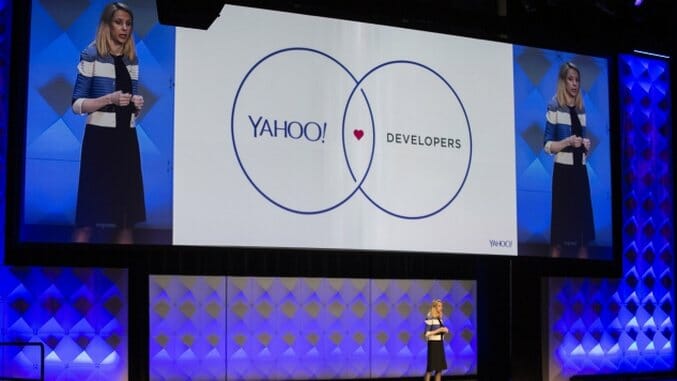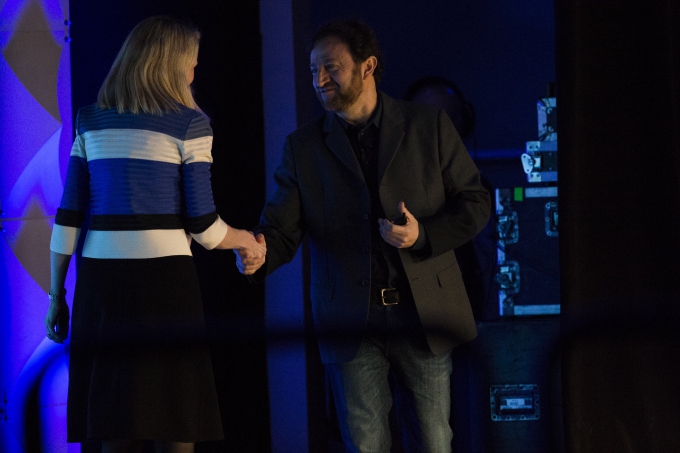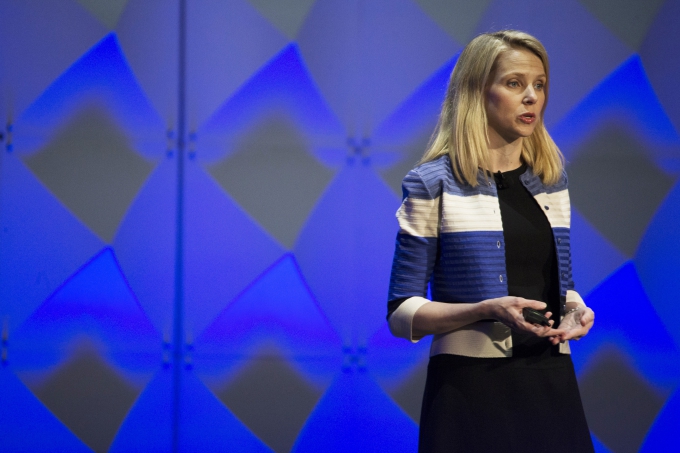As Yahoo Shrinks, CEO Marissa Mayer Turns to Phablets, Software for Growth
Photos courtesy of Getty Images
A day after Yahoo announced that it is shuttering most of its content business, CEO Marissa Mayer turned her attention to mobile during her keynote in San Francisco at the Yahoo Mobile Developer Conference, an area where company executives claim still possesses growth potential.
The mobile industry will be controlled by many players, and not the few big ones that we think of today, Mayer said, as she avoided addressing any of Yahoo’s recent struggles.
“We’re now experiencing the seven-year-itch of the mobile revolution,” Simon Khalaf, Yahoo Senior Vice President of Publishing Products, said. “Mobile is growing so fast.”
Khalaf predicts that the next big growth spurt in mobile will occur in late 2016 or early 2017, and the changes that are coming won’t happen at the hardware level.
“Hardware hasn’t changed in several years,” Khalaf said. “Wall Street thinks that hardware is on the decline, but there’s so much more opportunity in software.” 
The mobile experience and landscape is vastly different today than it was eight years ago. Eight years ago, we needed to go to a bank to deposit a check, Khalaf said, and we carried digital cameras with SD cards, and being social meant going out and actually talking to people.
To illustrate that mobile is still growing, Khalaf looked at the “mobile addicts” category—people who constantly check their phones. “These people don’t need wearables, because they’re already glued to their phones,” he said.
In 2014, the collected number of mobile addicts would make the category the eighth largest country in the world. In 2015, mobile addicts would become the fourth largest nation by population, trailing China, India and the United States.
Engagement is also up. Americans spend over four hours on their mobile devices daily. Most consumption categories are on the rise, except gaming. “This is because we didn’t have a lot of gaming hits in 2015,” Khalaf explained. Another reason is that even though people are spending less time in games, they’re driving monetization up with in-app purchases to beat the games faster.
-

-

-

-

-

-

-

-

-

-

-

-

-

-

-

-

-

-

-

-

-

-

-

-

-

-

-

-

-

-

-

-

-

-

-

-

-

-

-

-









































